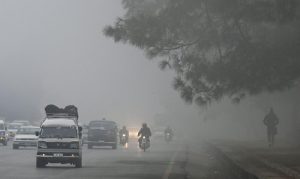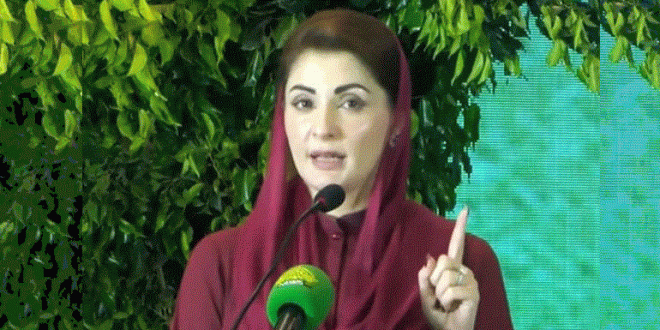11-10-2024
Bureau Report
LAHORE/ ISLAMABAD: The Chief Minister (CM) of Pakistan’s most populous province called for “climate diplomacy” with neighbor and arch-rival India to combat smog ahead of the winter months, which are accompanied by dangerous levels of pollution in both nations.
 “We should talk to them, this is called climate diplomacy. We should do it with India,” said Chief Minister Maryam Nawaz Sharif, adding the two nations needed to coordinate actions to temper toxic smog, which winds carry across the border.
“We should talk to them, this is called climate diplomacy. We should do it with India,” said Chief Minister Maryam Nawaz Sharif, adding the two nations needed to coordinate actions to temper toxic smog, which winds carry across the border.
Relations between India and Pakistan have gone through periods of thaw but have been largely frozen since they downgraded diplomatic ties in tit-for-tat moves in 2019.
When cooler temperatures take hold, pollution spirals. The Pakistani city of Lahore and India’s capital Delhi are among the most polluted cities in the world.
Air quality deteriorates in cooler months, as temperature inversion traps pollution closer to the ground, packing hospital wards with patients with respiratory problems.
Rising air pollution can cut life expectancy by more than five years per person in South Asia, one of the world’s most polluted regions, according to a report published last year which flagged the growing burden of hazardous air on health.
India’s foreign minister will visit Pakistan next week to attend the Shanghai Cooperation Organization summit, the first such visit in nearly a decade. However India’s government has ruled out discussions of bilateral relations during the visit.
In the packed paediatric emergency room of a Lahore public hospital, parents holding sick children lined up for treatment this week, part of a surge of young patients caused by the air pollution crisis in Pakistan’s second most populous city.
“We are disturbed and tense,” said Mohamad Qadeer, holding a nebulizing device to his three-year-old daughter Rameen’s nose, engulfing her face in a billow of steam delivering medication to ease her congested airways.
 Rising air pollution can cut life expectancy by more than five years per person in South Asia, one of the world’s most polluted regions, according to a report published on Tuesday which flagged the growing burden of hazardous air on health.
Rising air pollution can cut life expectancy by more than five years per person in South Asia, one of the world’s most polluted regions, according to a report published on Tuesday which flagged the growing burden of hazardous air on health.
The region, which includes the world’s most polluted countries of Bangladesh, India, Nepal, and Pakistan, accounts for more than half of the total life years lost globally to pollution, the University of Chicago’s Energy Policy Institute (EPIC) said in its latest Air Quality Life Index.
Rapid industrialization and population growth have contributed to declining air quality in South Asia, where particulate pollution levels are currently more than 50% higher than at the start of the century and now overshadow dangers posed by larger health threats.
People in Bangladesh, the world’s most polluted country, stands to lose 6.8 years of life on average per person, compared to 3.6 months in the United States, according to the study, which uses satellite data to calculate the impact of an increase in airborne fine particles on life expectancy.
India is responsible for about 59% of the world’s increase in pollution since 2013, the report said, as hazardous air threatens to shorten lives further in some of the country’s more polluted regions. In the densely populated New Delhi, the world’s most polluted mega-city, the average life span is down by more than 10 years.
Reducing global levels of lung-damaging airborne particles, known as PM 2.5, to levels recommended by the World Health Organization (WHO) could raise average life expectancy by 2.3 years, or a combined 17.8 billion life years, the report said.
 Pressmediaofindia
Pressmediaofindia




